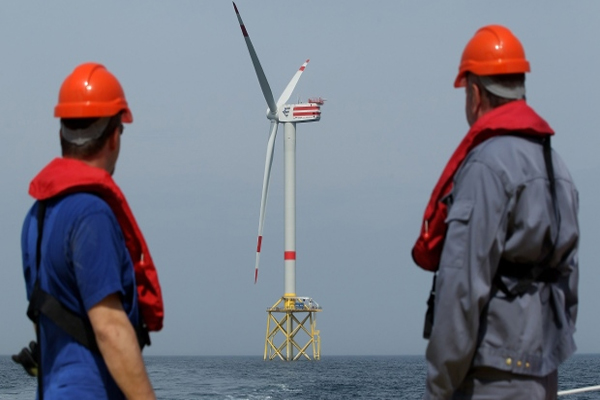
Leslie Kaufman, Bloomberg News
NEW YORK
EnergiesNet.com 11 02 2023
The cancellation this week of two major wind projects off the coast of New Jersey effectively sinks President Joe Biden’s end-of-the-decade goal for building out offshore wind energy, a component of the US plan to eventually reach net zero. But the setback is unlikely to rule out the Biden administration’s target of achieving a zero-carbon electricity grid by 2035, experts say.
The decision by Danish energy giant Orsted A/S comes as a reality check for the clean energy ramp-up in the US and a stark contrast to the electric-vehicle factories and solar jobs created in the wake of last year’s Inflation Reduction Act, which put billions of dollars behind renewable projects. While that expansion includes ambitious wind targets, at the moment only 10% of US electricity comes from wind — almost all from onshore turbines. Offshore capacity is a minuscule fraction of more than 144 gigawatts in total US wind power.
Even if offshore wind did grow quickly, it would still be tiny in terms of overall percentage of the pie. Without additional policy support, it would account for less than 2% of total installed energy capacity in 2030, according to Michelle Solomon, an electricity analyst with Energy Innovation, a non-partisan energy and climate research firm. Some cancellations would be replaceable by other sources, like solar and batteries.
“There are many pathways forward,” she said. “Offshore wind is not that crucial.”
And while offshore wind is struggling now as rising interest rates and supply chain problems have caused costs to skyrocket, the longer-term picture for the industry is more positive. “It’s not that it’s not going to happen. It’s just not going to happen as fast” as advocates initially believed, said Timothy Fox, an analyst at ClearView Energy Partners, a Washington D.C.-based research firm. Fox pointed to a “favorable policy environment” supporting the industry’s prospects.
Offshore wind has had a terrible year. Fully a quarter of all US deals have been canceled. Meanwhile, the cost of electricity from subsidized offshore wind is up almost 50% from 2021, according to calculations by BloombergNEF, an energy research firm.
The Ocean Wind 1 and 2 projects in New Jersey were slated to have generated in excess of 2 gigawatts of energy, or nearly 7% percent of the Biden administration’s 2030 offshore wind target capacity of 30 gigawatts.
Both BloombergNEF and S&P Global Commodity Insights have lowered their outlook on how much wind can be added to the grid by 2030. S&P’s current estimation is 22 gigawatts, and BNEF’s is even lower at 16.4 gigawatts.
At least a dozen other US offshore wind projects are waiting in the wings. Elizabeth Klein, director of the Bureau of Ocean Energy Management, emphasized in an emailed statement that the offshore wind industry “is continuing to rapidly expand” and the federal government is committed to supporting its development while confronting the current challenges. Offshore wind advocates, such as the American Clean Power Association and the Oceantic Network, pointed to other ventures across the East Coast as well as the federal government’s approval just a day earlier of a massive 2.6-gigawatt project near Virginia, set to be the largest in the US.
Many East Coast states are reliant on offshore wind to meet their own goals for reducing carbon pollution. That’s because geographical constraints make building out large solar and onshore wind farms in the Northeast difficult. Other projects are likely to go forward that are priced to take into account inflation.
Energy Innovation’s Solomon also said policymakers are looking to help with permitting reform and other supports that will decrease the time it takes projects to come to fruition. “We are not looking at a total turning away from wind,” she said. “Things are just going to be happening a little slower.”
–With assistance from Jennifer A Dlouhy.
bloomberg.com 11 02 2023











